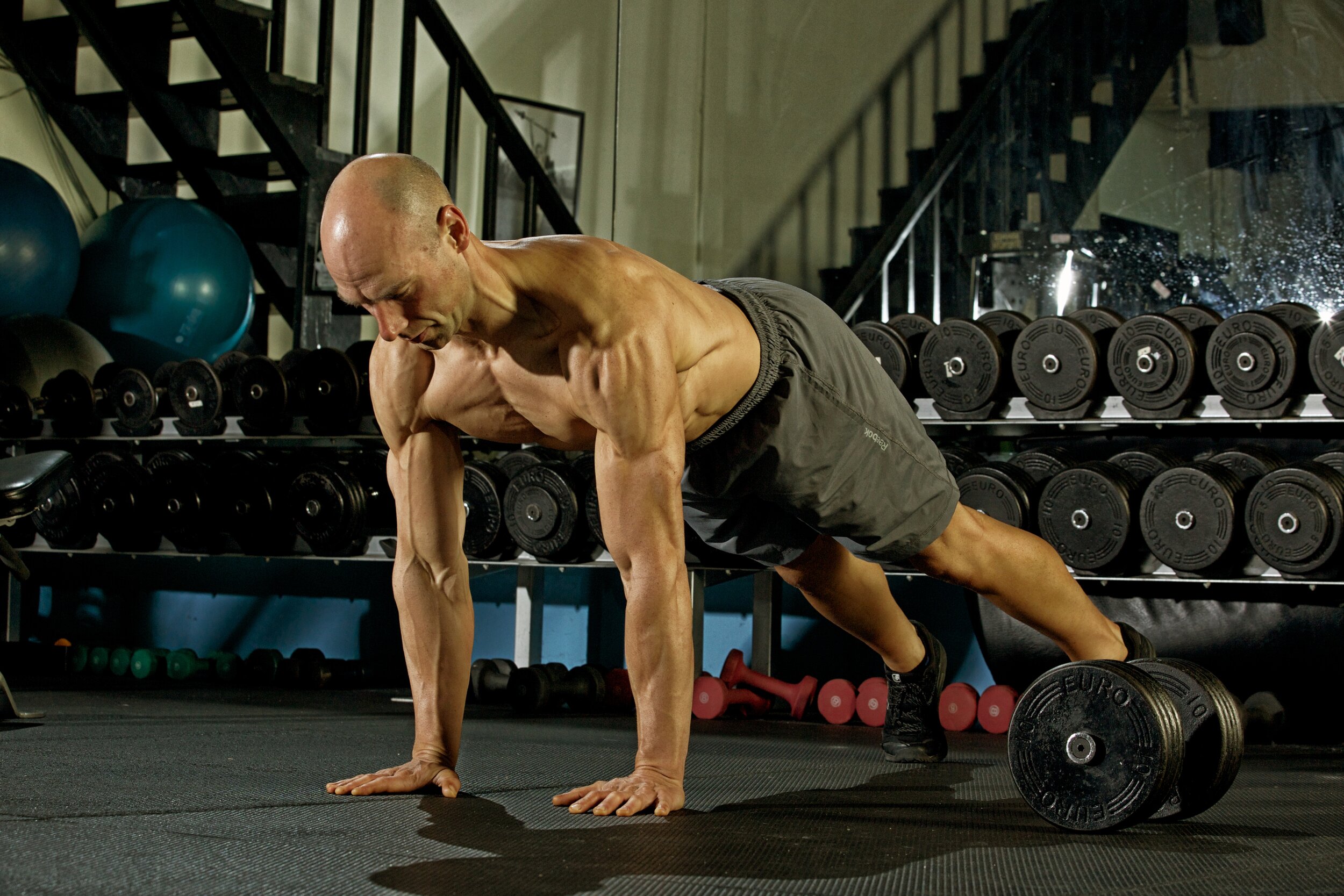How to perform a push-up correctly.
While most people know what a push-up is, very few know how to perform one correctly. Truth be told I can’t recall a time that I have ever seen someone perform a push-up correctly in the gym.
Push-ups are a great exercise as they target your anterior core (a push-up is essentially a front plank with motion) chest, triceps, anterior deltoids and serratus anterior.
The Serratus Anterior
While most people are surely familiar with most of the muscles just mentioned, what the heck is the serratus anterior and what does it do?
The serratus anterior muscle originates from the anterior surface of the first eight (or nine) ribs and inserts along the anterior surface of the medial border of the scapula (shoulder blade). Its functions include protraction of the scapula (pulls the scapula forwards along the ribcage), upward rotation of the scapula and stabilization of the scapula.
Why am I speaking all of this mumbo jumbo about the serratus anterior muscle when this blog post is supposed to be about how to perform a push-up correctly?
Simple! If you aren’t protracting your scapula and engaging your serratus anterior you aren’t doing a push-up correctly and are missing out on the benefits of training your serratus anterior.
So what are the benefits to training your serratus anterior?
For most individuals the main benefit to training the serratus anterior would be to have strong and healthy shoulders. Having strong and healthy shoulders means you can tackle pretty much anything life throws at you without getting injured!
For individuals concerned not only with having strong and healthy shoulders but also with aesthetics, training the serratus anterior is a no-brainer! For example, when performing a front (single or double) biceps pose or front lat spread the serratus muscle pops out and looks absolutely awesome! So, if you are concerned with aesthetics then you should be training it to ensure it pops out when posing. If you take a look at the photo of me on the right you will see a white arrow pointing at the serratus anterior.
Oh and in case you were curious, serratus in Latin means saw-toothed!
For a deep-dive on the role of the serratus anterior and the other muscles that control the scapula take a look at THIS scientific article.
The Push-Up
Now that we have the serratus taken care of let’s get to the push-up! In order to perform a basic push-up there are a few key points to keep in mind:
Maintain a neutral spine (as with most exercises) which means don’t let your hips sag (excessive lower back arching) and don’t have them so high that your lower back is rounded.
Keep your upper arms fairly close to your torso, ideally not much more than a 45 degree angle from your torso. Having your arms at a greater angle increases the likelihood of shoulder impingement which is not a good thing (click HERE to read a scientific article on this topic).
At the bottom of the push-up allow your shoulder blades to come together (retract).
At the top of the movement your shoulder blades should be apart and forward (protracted) as much as possible to ensure that you are engaging your serratus anterior muscle properly (the photo of me at the top of the page demonstrates this).
Below is a video that I filmed which demonstrates how to perform the push-up correctly along with a few variations.
Conclusion
I hope you now appreciate just how difficult a push-up can be if done correctly! If you found this helpful please comment below! In addition, please share this with someone that would find this helpful! Thanks for sticking with me until the end!


